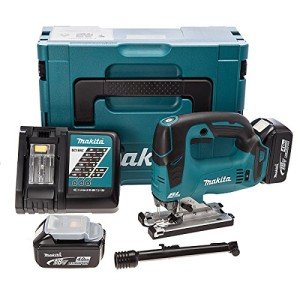
Mitre Saws For Sale
Add a review FollowOverview
-
Founded Date August 13, 1994
-
Posted Jobs 0
-
Viewed 2
Company Description
Miter Saws Tools To Make Your Daily Lifethe One Miter Saws Trick Every Person Should Learn
Mastering the Miter Saw: An In-Depth Guide
Miter saws are vital tools in both professional and DIY workshops, commemorated for their precision and versatility. Whether it’s for cutting molding, framing, or crafting custom-made furnishings, understanding the functions, types, and Best Miter Saw practices for utilizing a miter saw can significantly boost the quality of your tasks. This article explores everything you require to understand about miter saws, consisting of types, features, pointers, and frequently asked questions.
Understanding Miter Saws
A miter saw is an effective tool designed for making precise crosscuts and miters in a workpiece. It consists of a circular blade installed on a rotating arm, permitting users to reduce the spinning blade down onto the product and cut at numerous angles.
Kinds Of Miter Saws
Miter saws are available in a number of setups, each suited for different types of cuts and projects:
| Type | Description | Suitable Uses |
|---|---|---|
| Standard Miter Saw | Basic model for making angled cuts. | Simple furnishings tasks, framing. |
| Compound Miter Saw | Can tilt the blade for compound cuts (both miter and bevel). | Crown molding, picture frames. |
| Double Compound Miter Saw | Offers both left and ideal bevel abilities. | More complex cuts, angles in both directions. |
| Sliding Miter Saw | Features a sliding arm that allows the blade to take a trip forward. | Larger materials, such as deck boards. |
| Cordless Miter Saw | Battery-operated for mobility. | Task websites or remote locations without power. |
Key Features to Consider
When choosing a miter saw, consider the following features:
- Blade Size: Most frequently is available in 10-inch and 12-inch sizes; bigger blades allow for wider cuts.
- Cutting Capacity: The ability to cut through thicker products is important for particular jobs.
- Bevel Adjustment: Dual-bevel saws use greater flexibility by enabling cuts in both instructions.
- Dust Collection: A good dust collection system decreases mess and improves visibility.
- Laser Guide: A laser guide can boost precision by predicting a line on the material where the cut will occur.
Tips for Using a Miter Saw
To accomplish the best outcomes from a miter saw, here are some useful pointers:
- Always Wear Safety Gear: Safety glasses, hearing security, and dust masks are important to secure yourself while utilizing the tool.
- Protect Your Workpiece: Use secures or a stable workbench to guarantee your material is firmly protected during cutting.
- Step Twice, Cut Once: Accurate measurements will conserve time and reduce waste.
- Use the Right Blade: Different blades are designed for different materials (wood, metal, etc). Selecting the appropriate blade makes sure clean cuts.
- Keep the Blade Sharp: A dull blade can lead to rough cuts and can be harmful. Frequently check and replace blades as required.
Frequently Asked Questions About Miter Saws
1. What is the distinction between a miter saw and a sliding miter saw?
A standard miter saw just allows the blade to pivot for angled cuts, while a sliding miter saw has a sliding system that lets the user press the blade forward, enabling it to cut larger products.
2. Can I utilize a miter saw for rip cuts?
Miter saws are mainly developed for crosscuts; they are not appropriate for rip cuts. If you need to perform rip cuts, consider using a table saw.
3. How do I keep my miter saw?
Routine upkeep involves cleaning up the Electric Mitre Saw, inspecting the blade for wear, oiling moving parts, and ensuring the fences remain square. Constantly refer to the producer’s handbook for specific care instructions.
4. What product can I cut with a miter saw?
Miter saws can cut a range of products, consisting of softwood, hardwood, plywood, and even non-ferrous metals, depending on the blade utilized.
5. Is a laser guide truly needed?
While not absolutely necessary, a laser guide can considerably boost precision, assisting to visualize the cut line and resulting in more exact cuts.
Selecting the Right Miter Saw for Your Needs
With numerous alternatives readily available, it can seem intimidating to choose the ideal miter saw. Here are a few factors to consider that might help:
Consider Your Projects
- For Occasional DIY Projects: A standard miter saw may be sufficient if your projects are very little and simple.
- For Crown Molding or Advanced Carpentry: A compound or dual compound miter saw will offer the flexibility required for elaborate cuts.
- For Large Projects: If you’re dealing with broader products, a sliding miter saw will be required for the additional cutting capacity.
Budget Considerations
Miter saws vary substantially in price. Here’s a standard rate variety:
| Type | Rate Range |
|---|---|
| Requirement Miter Saw | ₤ 100 – ₤ 300 |
| Compound Miter Saw | ₤ 200 – ₤ 500 |
| Double Mitre Saw Compound Miter Saw | ₤ 300 – ₤ 600 |
| Sliding Miter Saw | ₤ 300 – ₤ 700 |
| Cordless Miter Saw | ₤ 200 – ₤ 400 |
A well-selected miter saw can be an indispensable tool for achieving precise cuts in woodworking tasks. Comprehending the types, features, and maintenance of miter Mitre Saws will boost not just the quality of the cuts but also the enjoyment of the woodworking experience. Whether you’re an experienced carpenter or a weekend DIYer, investing time in finding out about and mastering your miter saw will lead to more effective and pleasurable woodworking tasks.
Equipped with this information, you can confidently pick the miter saw that best meets your needs and raise your woodworking abilities to brand-new heights!

